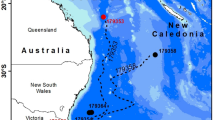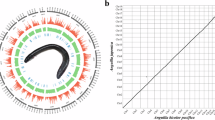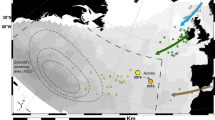Abstract
IN New Zealand there are two species of eel recognised by J. Schmidt.1 These are the short-finned eel, Anguilla australis, and the long-finned eel, Anguilla aucklandii. Latterly I have shown that Anguilla aucklandii must become Anguilla dieffenbachii on the grounds of priority.2 Sexes of eels keep apart in our fresh water and in the migration seawards of eels in the autumn this segregation of the species is usually most marked. The male in both species is small, while females are much larger, the last to migrate seawards being the large female A. dieffenbachii, which generally measure more than 5 ft.
This is a preview of subscription content, access via your institution
Access options
Subscribe to this journal
Receive 51 print issues and online access
$199.00 per year
only $3.90 per issue
Buy this article
- Purchase on SpringerLink
- Instant access to full article PDF
Prices may be subject to local taxes which are calculated during checkout
Similar content being viewed by others
References
Trans. N.Z. Inst., 58, 379–388; 1928.
N. Z. J. Sci. and Tech., 13, No. 4, 228; 1932.
Author information
Authors and Affiliations
Rights and permissions
About this article
Cite this article
PHILLIPPS, W. Hybridism in Eels. Nature 130, 889–890 (1932). https://doi.org/10.1038/130889c0
Issue date:
DOI: https://doi.org/10.1038/130889c0



